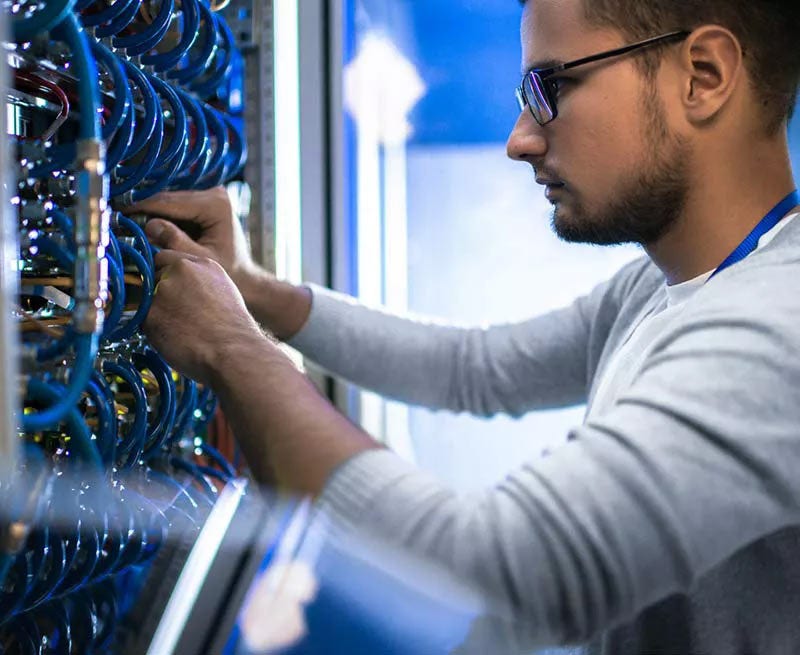Constraints, solutions
To meet such growth, DC builders must manage significant constraints. Many providers’ current portfolios lack the specialised infrastructure needed to handle AI workloads, such as powerful GPUs, high-speed networking, and advanced cooling systems.
DC energy usage is exploding, with some analysts predicting a doubling of their global electricity demand in just the next two years; all too frequently, ageing infrastructure and lack of available grid capacity compound this challenge, whilst on the labor side, most DC operators are struggling to find suitable talent at build phase.3
Naturally, DC providers are looking for solutions to these problems, which presents significant opportunities throughout the DC build and maintenance value chain. Here we enumerate some of the more prominent examples.
Infrastructure
Hyperscale providers are extending server lifespans to free up funds for the development of new AI clusters.
Analysis firm Omdia estimates that the average life of servers located in enterprise data centres or colocation has now increased to 7.6 years, and that hyperscale providers raised the average lifespan of their kit to 6.6 years during 2023.4
Renewable energy
Aggressive pursuit of renewable energy is seen by some operators as a means to mitigate the impact of soaring energy usage and associated planning permission and social license to operate challenges.
Google, for instance, is aiming to power its operations with 100% renewable energy around the clock by 2030, reflecting a broader industry trend towards sustainable practices.
Nuclear energy
Some operators are exploring nuclear energy, including traditional nuclear and small modular reactors (SMRs), as a potential solution for their supply issues.
However, while SMRs offer a theoretically cost-effective and scalable option, long lead times mean their operational deployment remains 10-15 years away.
Batteries and fuel cells
Google has already piloted battery arrays as a cleaner backup alternative to diesel generators for its DC operations, whilst fuel cells are gaining traction as both backup and primary power supplies.
Last year it was announced that Ireland’s new Castlelost DC, a joint venture between SK Ecoplant and Lumcloon Energy, would be entirely powered by fuel cell technology, whilst Honda and Mitsubishi are testing the feasibility of powering a DC with fuel cells taken from electric vehicles.







